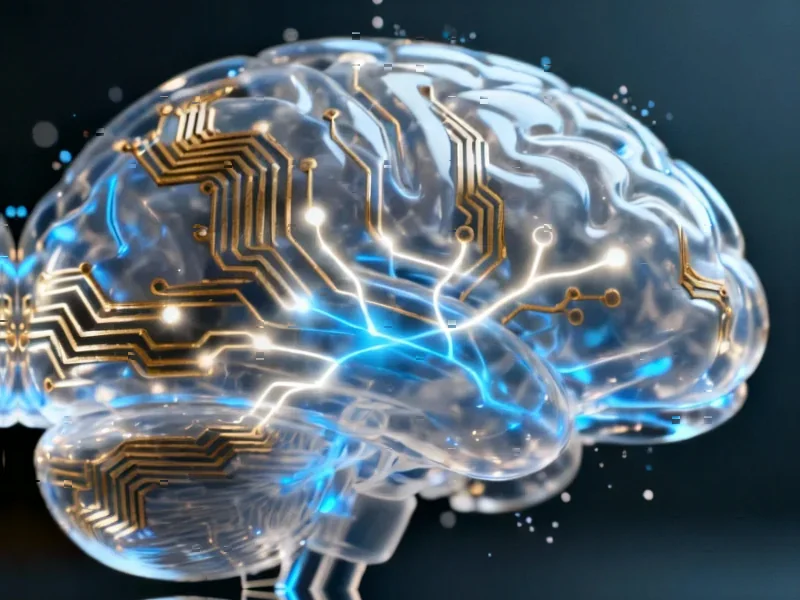Breakthrough in Sustainable Construction Materials
In a significant advancement for sustainable construction, researchers have developed an optimized machine learning model that accurately predicts self-healing efficiency in recycled aggregate concrete. This innovation addresses one of the construction industry’s most persistent challenges: the development of durable, self-repairing concrete that reduces maintenance costs and environmental impact while extending structural lifespan.
Table of Contents
- Breakthrough in Sustainable Construction Materials
- The Self-Healing Concrete Revolution
- Machine Learning Meets Materials Science
- Superior Performance Metrics
- Key Findings and Practical Implications
- Environmental and Economic Advantages
- Future Directions and Industry Impact
- Conclusion: A New Era in Construction Materials
The Self-Healing Concrete Revolution
Self-healing concrete represents a paradigm shift in construction materials technology. Unlike traditional concrete that deteriorates over time, these advanced composites can autonomously repair microcracks, significantly enhancing structural durability and reducing maintenance requirements. The technology encompasses various approaches, including capsule-based systems, fiber-reinforced composites, and bacterial concrete, each offering unique mechanisms for automatic crack repair.
What makes this development particularly compelling is the integration of recycled coarse aggregate (RCA) as a substitute for natural aggregates. This approach not only reduces material costs but also enhances the sustainability profile of construction projects by repurposing waste materials. The combination of self-healing properties with recycled materials creates a powerful synergy for environmentally conscious construction.
Machine Learning Meets Materials Science
The research team established a comprehensive database of 173 experimental datasets, using eight key performance indicators as input variables and self-healing rate as the output. The development of the NRBO-XGBoost model represents a sophisticated fusion of machine learning algorithms specifically tailored for predicting concrete performance., as detailed analysis
This optimized model combines the Newton-Raphson iterative method with the XGBoost algorithm, creating a powerful tool that efficiently handles the complex nonlinear relationships between material composition and self-healing performance. The result is unprecedented prediction accuracy that outperforms conventional modeling approaches., according to related news
Superior Performance Metrics
The NRBO-XGBoost model demonstrated exceptional performance compared to four alternative machine learning models and two optimization methods. Key performance indicators revealed its superiority:, according to recent innovations
- R² score of 0.9569 – indicating exceptional predictive accuracy
- RMSE of 7.1800 – demonstrating minimal prediction error
- MAE of 4.9575 – confirming reliable performance across the dataset
These results significantly outperform traditional experimental approaches, providing engineers and researchers with a reliable tool for material development and performance prediction.
Key Findings and Practical Implications
Through sophisticated sensitivity analysis using the Shapley method, researchers identified crack width as the most influential factor in self-healing performance. Surprisingly, within the studied parameters, RCA content showed minimal direct impact on healing efficiency. However, the research revealed a crucial indirect benefit: RCA’s strong negative correlation with bacterial content requirements.
This finding suggests that recycled aggregates can provide enhanced survival space for bacteria, potentially reducing the amount of bacterial agents needed while maintaining effective self-healing capabilities. This dual benefit of cost reduction and performance optimization positions RCA as a valuable component in sustainable concrete development.
Environmental and Economic Advantages
The integration of recycled materials with self-healing technology offers substantial benefits for sustainable construction:
- Reduced carbon emissions through waste material utilization
- Lower production costs compared to conventional self-healing concrete
- Extended service life of concrete structures
- Decreased maintenance requirements and associated costs
These advantages align with global sustainability initiatives and provide practical solutions for construction projects seeking to balance performance requirements with environmental responsibility.
Future Directions and Industry Impact
This research opens new possibilities for intelligent material design and optimization. The successful application of machine learning in predicting concrete performance suggests broader applications across construction materials science. Future research directions may include:
- Expanding the model to predict additional concrete properties
- Incorporating real-time monitoring data for dynamic performance prediction
- Developing integrated design tools for sustainable concrete mixtures
- Exploring applications in other composite building materials
The methodology established in this study provides a framework for future innovations in smart material development, potentially transforming how construction materials are designed, tested, and implemented.
Conclusion: A New Era in Construction Materials
The successful development of the NRBO-XGBoost model for predicting self-healing efficiency marks a significant milestone in construction materials research. By combining advanced machine learning techniques with sustainable material science, researchers have created a powerful tool that accelerates the development of high-performance, environmentally friendly concrete.
This approach not only provides immediate practical benefits for concrete performance prediction but also establishes a foundation for future innovations in intelligent material design. As the construction industry continues to prioritize sustainability and performance, such integrated approaches will become increasingly valuable in developing the next generation of building materials.
The research demonstrates that through sophisticated computational methods and thoughtful material selection, it’s possible to create construction solutions that simultaneously address performance requirements, economic constraints, and environmental concerns – a crucial combination for sustainable development in the built environment.
Related Articles You May Find Interesting
- Quantum Time Reversal Reveals Hidden Dynamics Through Advanced Correlators
- Unlocking Cancer Treatment Potential: How COVID-19 mRNA Vaccines Show Unexpected
- Unlocking Pancreas Evolution: How Pigs Bridge the Gap Between Mice and Humans in
- Breakthrough Cryogenic Analysis Reveals True Nature of Battery Interfaces
- Revolutionary Metapixel Technology Enables Ultra-High Resolution Reflective Disp
This article aggregates information from publicly available sources. All trademarks and copyrights belong to their respective owners.
Note: Featured image is for illustrative purposes only and does not represent any specific product, service, or entity mentioned in this article.



